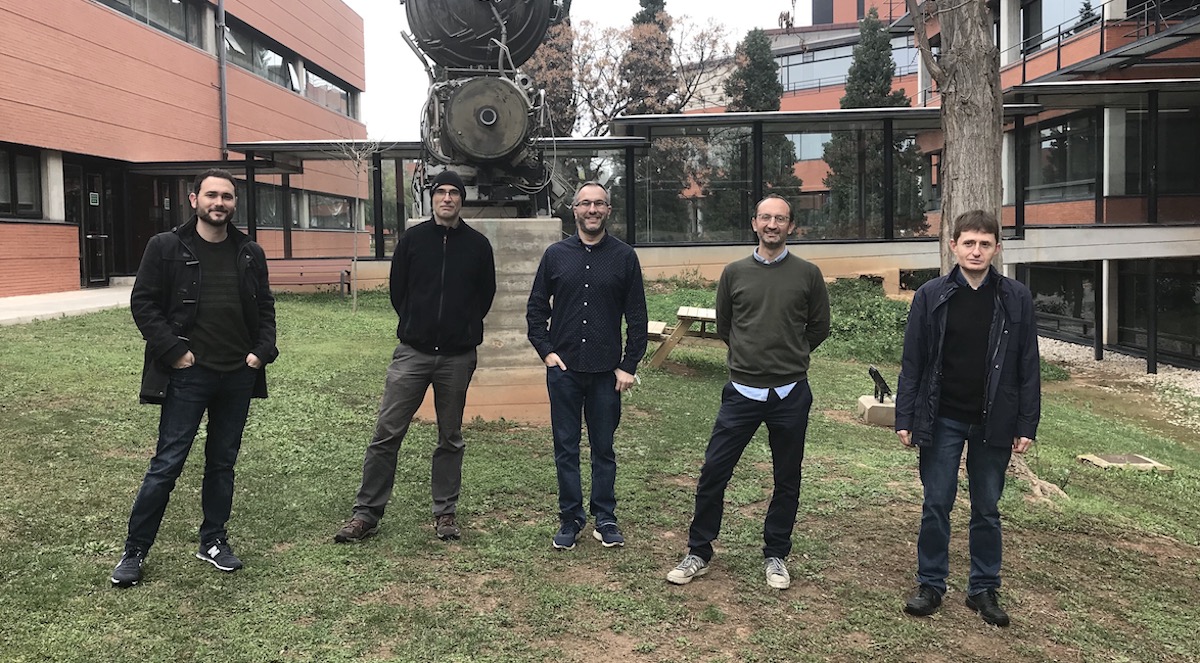Researchers from the University establish a new methodology to improve, from space and through machine learning, the observation and analysis of the terrestrial biosphere. This statistical approach will represent a significant advance in monitoring crops and carbon sinks, as well as in predicting floods and droughts. The work appears published in the journal Science Advances.
The new machine learning methodology allows to improve the precision in the prediction of key parameters, such as the leaf area index, the gross primary productivity and the fluorescence of the chlorophyll induced by the sun, among others. The field of applications is huge and promises to be of great use to improve the monitoring of crops and carbon sinks, detect changes and anomalies, droughts and floods. The application of these machine learning techniques will allow more precise measurements of the dynamics of terrestrial carbon sinks, which has implications for mitigating actions of global climate change.
The Earth is changing rapidly and it does so in many ways. Sensors on board satellites – including airplanes and drones – continually obtain valuable information about our planet remotely. Quantifying the vegetation cover and studying its biochemical structure and functioning from space is key to understanding global change, biodiversity and agriculture.
Since the 1970s, remote sensing has relied heavily on the use of vegetation indices, which are parametric formulas for the spectral signal acquired by satellites. These indices, simple to calculate, are designed to correlate well with particular biophysical phenomena of the land cover, such as greenness, water content or photosynthetic activity, among others. For this reason, these indices have been used and continue to be used extensively to quantify the terrestrial biosphere, its productivity and its dynamics. However, the literature and the multiple applications reveal important limitations, which are finally resolved in this study.
In the article published by Science Advances, whose first author is the physicist and professor of Electronic Engineering and coordinator of the Image and Signal Processing (ISP) group of the University of Valencia Gustau Camps-Valls, the scientists present a methodological approach to machine learning whose theoretical framework allows to generalise all the vegetation indices used in the literature in this regard. “We have verified that all the previous approaches – more heuristic, intuitive and based on simple physical principles – fit as particular cases in our methodology. Now, from a statistical perspective, we are gaining in precision and saving the limitations that slowed progress in this section of the studies on the terrestrial biosphere”, explains Camps-Valls. “The new methodology improves the results in all the applications that we have approached: monitoring the phenology of vegetation, quantification of carbon absorption and photosynthetic activity on a planetary scale. We also show that it is extremely useful for detecting changes and vegetation cover, as well as for estimating crop yields from space, for example”, adds Álvaro Moreno, ISP researcher (IPL-UV) and member of the ERC Synergy Grant USMILE directed by Gustau Camps.
The proposed methodology, which makes it possible to improve all the vegetation indices, and in particular the index most used in the last four decades – the NDVI –, provides the keys to designing new and more powerful indices. In addition, it stands out for its extreme algorithmic simplicity. “We provide the source code in all programming languages, including Google Earth Engine, a platform that allows results to be scaled on a planetary level. In this way, we think that the framework will be adopted by many scientists, professionals and developers”, says Jordi Muñoz, co-author and member of the ISP. “The fact that the new index generalises all the previous indexes offers theoretical guarantees that it will always work the same or better”, says Manuel Campos, member of the ESR group of the Physics Department of the University of Valencia, “and it is something very simple to calculate and apply in practice”, adds Javier García, from the same group.
In addition to its use to monitor the terrestrial biosphere, the proposed statistical approach has possible applications in oceanographic and atmospheric studies, among others. Indicators are widely used in all branches of science, and can be easily improved with this methodology.
Reference:
A Unified Vegetation Index for Quantifying the Terrestrial Biosphere. Gustau Camps-Valls, Manuel Campos-Taberner, Álvaro Moreno-Martı́nez, Sophia Walther, Grégory Duveiller, Alessandro Cescatti, Miguel Mahecha, Jordi Muñoz-Marı́, Francisco Javier Garcı́a-Haro, Luis Guanter, John Gamon, Martin Jung, Markus Reichstein, Steven W. Running. Science Advances, 2021; 7: eabc7447. 26 February 2021
https://advances.sciencemag.org/content/7/9/eabc7447


